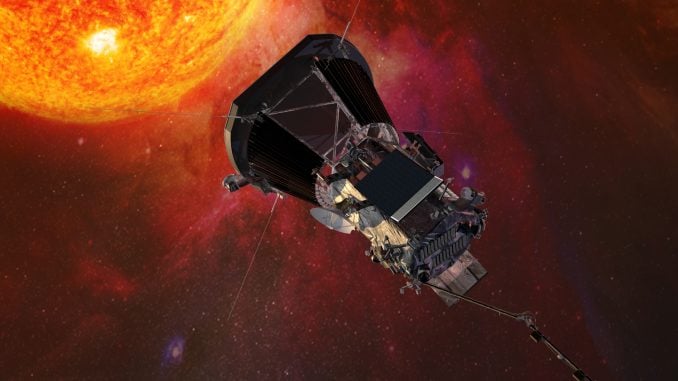
CHICAGO – In an historic moment at the University of Chicago on Wednesday, NASA announced that the U.S. will launch humanity’s first mission to a star. The Parker Solar Probe, named in honor of Dr. Eugene Parker, an American astrophysicist credited with developing the concept of solar wind, is scheduled to fly directly into our sun’s atmosphere next summer. “It’s a mission of extremes,” a video tells visitors to a website set up to allow the public to track the mission. “The space craft will plunge through the sun’s atmosphere, the corona, and fly closer to the sun’s surface than any spacecraft in history.” Over the course of seven years, the Parker Solar Probe will orbit the sun 24 times at speeds reaching 450,000 miles per hour. With gravitational assistance from Venus, each orbit will allow the probe to get a little closer to the sun. The final orbit is expected to swoop within 3.83 million miles of the sun’s surface, facing extreme heat and radiation at temperatures that well exceed 10,000 degrees Fahrenheit. Remarkably, the payload of the probe is expect to remain at room temperature throughout the mission.Parker, 89, joined NASA leaders on Wednesday to discuss the groundbreaking mission named after him. “The solar probe is going to a region of space that has never been explored before,” said Parker. “It’s very exciting that we’ll finally get a look. One would like to have some more detailed measurements of what’s going on in the solar wind. I’m sure that there will be some surprises. There always are.”According to the NASA website, the primary science goals for the mission are to trace the flow of energy and to explore what accelerates solar wind in order to help better predict space weather.The probe is on track for launch during a 20-day window that opens July 31, 2018. The mission is part of NASA’s “Living With a Star” program to explore aspects of our solar system that directly affect life on Earth.



